“If you shoot at mimes, should you use a silencer?”
– Stephen Wright –
Contents:
- Suppressor Essentials
- Suppressor Legality
- Benefits of Suppressor Use
- How Does a Suppressor Work?
- Methods of Suppressor Mounting
- Standard Velocity (supersonic) vs. Subsonic Ammunition
- Rimfire Suppressors
- Pistol Suppressors
- Rifle Suppressors
- Suppressor Cheats and Tips
- Methods of Ownership
- Path to Ownership
- BATFE Paperwork
- Manufacturers
- Suppressor Forums
- Suppressor Operating Manuals
Suppressor Essentials:
The sound of a firearm is usually two sounds that are perceived as being the same “bang”. There is the report from the expanding gasses leaving the firearm when the cartridge is fired, and then there is the supersonic crack from the bullet as it flies through the air faster than the speed of sound (like a fighter plane).
If you shoot a suppressed firearm with ammunition that does not have a muzzle velocity of less that the speed of sound (1125 feet per second at sea level), your gunshot report will be significantly reduced by the suppressor, but you will still have a loud supersonic crack. To effectively shoot as quietly as possible you will need to shoot subsonic ammunition from your suppressed firearm.
Not only does the noise of the expanding gasses leave the firearm from the end of the barrel, but there is also a component of the noise that comes from the breech as the semi-automatic or automatic action cycles and opens to eject the spent casing and reload a fresh round. This is why bolt action rifles are the easiest and quietest to suppress. A .22LR caliber bolt-action rifle equipped with a quality suppressor and subsonic ammunition is as quieter than a child’s BB gun.
Only bolt-action and automatic (semi or full) firearms can be suppressed. Revolvers can not be effectively suppressed as there is a significant amount of escaping gas (noise) that escapes from the gap between the cylinder and the forcing cone (beginning of the barrel).
“Suppressors” are also commonly called “silencers” or “cans”.
back to top
Suppressor Legality:
Who can own a silencer? Anyone who is a legal U.S. resident, 21 years of age and older, a non-felon, and lives in one of the 39 states that allow private ownership of silencers.
States Where Suppressor Ownership Is Legal:
back to top
Benefits of Suppressor Use:
Hearing Protection: Silencers protect the shooter and those nearby from temporary hearing threshold shift and from irreversible hearing loss, which can result from single shot exposure.
Command and Control: Silencers help users maintain command and control by enabling team members to communicate during live fire.
Night Vision: By eliminating muzzle flash, silencers prevent “blooming” of night vision equipment and help preserve unaided night vision. Silencers are typically more effective at reducing flash than flash-hiders.
Weapon Control: silencers reduce recoil and muzzle flip allowing for more accurate and faster follow-up shots.
Camouflage: Silencers disguise the location of the shooter by reducing muzzle flash and minimizing environmental disturbances.
Friend or Foe: When every member of the team employs silencers, the opposition is instantly identifiable by their muzzle flash and noise.
back to top
How Does a Suppressor Work?:
back to top
Methods of Suppressor Mounting:
Integral:
These are built on their host firearm. They can not be removed and used on a different host. Most integral designs employ port holes in the barrel to siphon gases into an expansion chamber that surrounds the barrel. Bleeding gas from behind the projectile keeps them quietly subsonic and lowers the sound signature of the silencer.
Direct Thread:
Used by most rimfire and centerfire pistol silencers, as well as by many centerfire rifle silencers, direct thread mounts refers to silencers that attach to the end of the barrel via screw threads. Direct thread silencers can be used on multiple hosts.
Fast Attach / Detach:
These silencers rely on an attachment method that is faster and easier to manipulate with gross motor skills than a direct screw thread attachment. Rather than attaching directly to the barrel of the host firearm, fast attach silencers usually couple to an adapter that is semi-permanently installed on the host weapon barrel. The three most commonly encountered designs are: flash-hiders, muzzle brakes, and three lug barrels/adapters.
back to top
Standard Velocity (supersonic) vs. Subsonic Ammunition:
At sea level the speed of sound is 1116 feet per second. While a particular suppressor might be great a quieting a gunshot, if the projectile exceeds Mach 1 then you will hear a loud crack. The only way to get the most performance out of a suppressed weapon is to use subsonic ammunition (ammunition where the projectile flies less than 1116 feet per second).
.22LR:
Rifle: You will get the best sound suppression results from a .22LR rifle with ammunition labeled as subsonic. Fired from a .22LR rifle, standard or high velocity .22LR ammunition has a muzzle velocity faster than the speed of sound, and although your suppressed rifle will shoot quietly, the bullet will create a loud crack as it exceeds the sound barrier. Keep in mind that you may have to experiment with several different brands and weights of subsonic ammunition to find what will function your semi-automatic .22LR. Many subsonic loads are in the 1050 feet per second range and should function reliably in most .22LR rifles. I have had very reliable performance with Gemtech’s subsonic offering, as well as CCI’s Green Tag ammunition, both of which only achieve an advertised muzzle velocities of 1050 to 1070 feet per second. There are some brands of ammunition that are as slow as 700 feet per second. These round will work great in a suppressed bolt-action rifle, but probably won’t run your semi-auto rifle. The only way to know what works best will be to run a bunch through your firearm to verify reliability and quietness.
Pistol: Any standard or high velocity ammunition should not reach supersonic velocity when fired from the short barrel of a handgun. This means that you should be able to enjoy suppressed shooting with your pistol’s favorite ammunition (what fires reliably and accurately) and not have to use ammunition specifically labeled as subsonic.
9mm:
With 9mm pistols you will have to use 147 grain ammunition. 115, 124, and 135 grain loads are all supersonic and will make a significant crack in flight. 147 grain full metal jacket ammunition should function reliably out of any well maintained, quality pistol. With a good suppressor it should reduce the sound of the pistol to less than the noise of an air hose being disconnected from an air compressor. 147 grain loads were originally designed to be used out of suppressed weapons for special Navy units. Suppressed pistols were used to take out sentries with head shots. Suppressed sub-machine guns with longer barrels got a little more velocity and performance than with pistols, but still remained subsonic. Navy commandos were more concerned with sound suppression than terminal performance. The 147 grain load gave them the quiet they needed with as much terminal performance as one might expect from a Hague Convention compliant non-expanding round.
Later, police and civilians wanted a subsonic expanding round. While there have been many 147 grain expanding hollow-point offerings from all of the major manufacturers, unfortunately very few are very good performers in terms of terminal performace. Standard velocity and +P loadings of 115, 124, and 135 grain hollow-points have high enough velocity so that as the projectile is forced through soft media (the bad guy) the hydro-dynamic force rammed into the hollow core to push the bullet inside out. This makes the projectile grow in diameter as it passes through, causing more damage within the intended target, and slowing the projectile down like a parachute, hopefully dumping all of the bullets energy into the target, hopefully without exiting the target. Many times the slower 147 grain hollow-points do not have the velocity to open fully, if any at all, as they pass through the target. Some times the spent bullets are recovered and do not look any different than before they were fired. This is a detriment because the bullet will have less fight-stopping effect on target, and may have a higher probability of passing through the intended target and hitting an innocent bystander.
Buy a bunch of 147 grain FMJ ammunition for training and plinking. Before you bulk up on jacketed hollow-point ammunition you should research as to what is the current state-of-the-art 9mm subsonic jacketed hollow-point. Buy a couple of boxes to run through your suppressed pistol to confirm reliable function, and if it runs good then you can stockpile (hoard) that particular load
.40 S&W:
The three most common bullet offerings in .40 S&W ammunition are 155 grain, 165 grain, and 180 grain. All 155 grain ammunition is has supersonic muzzle velocities. Most 165 grain ammunition is supersonic, but there are a few offerings that have muzzle velocities just below the speed of sound. You will have to do your research and find a 165 grain load that is appropriate for your needs. All 180 grain loads are subsonic and will not make a supersonic crack when fired.
.45 ACP:
With but a few exceptions all .45 ACP ammunition is subsonic. This is a very good round to run with a suppressor. Get a threaded barrel for your favorite .45 ACP pistol / ammunition combination and shoot until your heart’s desire.
.223 Remington / 5.56 x 45 mm NATO:
Unless you use a specialty or reduced power load then all .223 Remington / 5.56 mm ammunition is supersonic (about Mach 2.5). You can make a rifle pretty quiet in terms of the gunshot, however you will get a significant crack when you fire regular ammunition. It does make the rifle tolerable and safe to shoot indoors, and when fired outdoors it makes it hard for anyone to tell where the shot came from. If you use subsonic ammunition so as to maximize your suppressed weapon then you should expect it not to have enough power to cycle the action. You will have to chamber a new round each time. Also, expect much less ballistic and terminal performance from a subsonic round. If you use subsonic ammunition with a bolt-action rifle, then cycling won’t be an issue, but you can still expect the same reduction in ballistics and terminal performance.
.308 Winchester / 7.62 x 51 mm NATO:
Unless you use a specialty or reduced power load then all.308 Winchester / 7.62 x 51 mm ammunition is supersonic (about Mach 2.3). You can make a rifle pretty quiet in terms of the gunshot, however you will get a significant crack when you fire regular ammunition. If you use subsonic ammunition so as to maximize your suppressed weapon then you should expect it not to have enough power to cycle the action. You will have to chamber a new round each time. Also, expect much less ballistic and terminal performance from a subsonic round. If you use subsonic ammunition with a bolt-action rifle, then cycling won’t be an issue, but you can still expect the same reduction in ballistics and terminal performance.
.300 Blackout:
This round shows great potential for anyone wanting to quietly employ a .30 caliber rifle round within 100 yards. Supersonic loads are available for shooting at distance past 100 yards, but expect a supersonic crack. If you truly want to maximize your suppressed .300 Blackout rifle with subsonic ammunition then expect rapidly diminishing ballistics and performance past 100 yards.
back to top
Rimfire Suppressors:

Don’t be tempted to purchase a cheap rimfire (.22 caliber) suppressor that can not be disassembled. Rimfire ammunition is extremely dirty when fired a will leave a tremendous amount of gunshot residue in your suppressor. There isn’t a way to properly clean out a suppressor that is permanently sealed. Pay a little extra and get a suppressor that can properly serviced.
Suppressors interiors get very dirty from gunshot residue. This is especially true with rimfire (.22 caliber) suppressors as they will build up a combination of gunshot residue and lead shavings. If left neglected for an extended period of time, the baffles will get increasing hard to clean. Before shooting with the suppressor for the first time, and after each cleaning, coat the baffles in a very thin film of high-temperature grease. This will make baffle cleaning much easier.
back to top
Pistol Suppressors:

Nielsen Device / Muzzle Booster / Recoil Booster For Pistol Suppressors:
A recoil booster, or Nielson device, may be attached to the rear of the suppressor, and is required for weapons where the barrel tilts while they are cycling. Most pistols fall into this category (including your favorite Glock, XD, M&P, Sig, etc.). For weapons with fixed barrels, such as a 1911 or a pistol caliber carbine, a recoil booster should not be used. Rimfire pistols will not require a recoil booster.
There are two basic ways that manufacturers deal with fixed barrels in their pistol-caliber suppressor products:
- For suppressors containing a recoil booster, a fixed barrel spacer is used to disable the booster.
- Some pistol-caliber suppressors are created specifically for fixed barrel weapons. In those cases, the suppressor doesn’t contain a recoil booster at all – but they won’t function reliably on weapons with tilting barrels.
- Consult your suppressor’s operating manual or the manufacturer’s website to find out the appropriate way to configure your pistol / suppressor combination.
A fixed barrel spacer is an incredibly simple device. To install it, simply replace the booster spring with the spacer and then re-insert the piston back into the suppressor.
Advanced Armament Corporation Pistol Suppressors:
Gemtech Pistol Suppressors:
Coming soon!
back to top
Rifle Suppressors:
Rifle suppressors are not intended to be run wet. The super-heated steam can damage the interior of the suppressor and may void the warranty. Military operators may find it necessary to fire their suppressed rifles after swimming, but they have carte blanche to replace worn out equipment. As a civilian with expensive, hard earned equipment, don’t get into the practice of firing your rifle suppressor when it is wet inside.
Direct impingement style AR rifles are traditionally quieter when operating with a suppressor. That being said, you may experience more gas blow-back in your face and gunshot residue in upper receiver as well as down in your magazine when shooting a direct impingement AR style rifle with a suppressor. When operating with a suppressor, wear protective glasses, and be sure that the rifle is properly lubricated. Grease works great because it won’t be blown back in your face like oil.
Generally speaking, gas piston style AR rifles can not be quieted as much as a direct impingement style rifle when using a suppressor. Some people purchase gas pistol style rifles thinking that they won’t get gas blowback in their face when using a suppressor, but you are just as likely to get it from a piston rifle as you are a direct impingement rifle.
back to top
Suppressor Cheats and Tips:
Don’t be tempted to purchase a cheap rimfire (.22 caliber) suppressor that can not be disassembled. Rimfire ammunition is extremely dirty when fired a will leave a tremendous amount of gunshot residue in your suppressor. There isn’t a way to properly clean out a suppressor that is permanently sealed. Pay a little extra and get a suppressor that can properly serviced.
.22LR and pistol caliber suppressors run quieter when they are wet inside. You can pour a small amount of water (about the amount that will fit into the bottle cap of a 20 ounce Coca Cola bottle) into the suppressor. Depending on whether you are pouring the water in a cold suppressor, or a hot suppressor that has been recently shot will determine how long the water lasts before it evaporates. In a cold suppressor the water will usually last half to a full magazine. You will know that the water is gone when the suppressor doesn’t quiet the shot as much. You can also coat the baffles with a very fine coat of high-temperature grease, ultrasound gel, or wire pulling gel. The ultrasound and wire pulling gels will probably get shot out before the high-temperature grease. Do not use any type of liquid when shooting a rifle suppressor.
Suppressors interiors get very dirty from gunshot residue. This is especially true with rimfire (.22 caliber) suppressors as they will build up a combination of gunshot residue and lead shavings. If left neglected for an extended period of time, the baffles will get increasing hard to clean. Before shooting with the suppressor for the first time, and after each cleaning, coat the baffles in a very thin film of high-temperature grease. This will make baffle cleaning much easier.
back to top
Methods of Ownership:
Personal:
BATFE application requires fingerprinting, passport photos, approval of you local chief law enforcement officer, and a $200 transfer tax.
You are the only one to be allowed in possession of the suppressor.
Survivorship becomes problematic as when you die your survivors will now be in illegal possession of a Class III item. They will have to jump through all of the hoops that you jumped through to the suppressor(s), including the full application process and the BATFE $200 transfer tax.
NFA Trust:
With a NFA trust the Class III items will belong to a trust of your creation. You will not own them. This will streamline the application process and simplify survivorship.
With a trust you are not required to provide fingerprints or passport photos. Simply submit a copy of the trust with the BATFE Form-4 application and a money-order from the trust for the $200 transfer tax.
You can create survivorship for the trust. Example: when you die then your spouse will then become head of the trust. If they die before your children are 21 years of age then you can list another responsible adult to take custody of the items listed on the trust until your children are 21. At that time they will be granted custody of the trust and the listed items. Your attorney will be able to help you set this up the way you want.
 When you personally own a suppressor (or other Class III items such as a machine gun, short barrel rifle (SBR), or short barrel shotgun) you are the only person that can possess the item. When you have these items owned by a trust you can list other responsible adults (people who are legally able to possess firearms) that may be in possession of these items. This means that as long as their full legal name is listed on the trust that they can be in possession of the Class III item(s) as long as they have a copy of the trust and a copy of the BATFE tax stamp that you receive when you are approved for possession of such items. For example: in addition to having your wife set up for survivorship, you might choose to add other adult family members so that you might legally loan them the items.
When you personally own a suppressor (or other Class III items such as a machine gun, short barrel rifle (SBR), or short barrel shotgun) you are the only person that can possess the item. When you have these items owned by a trust you can list other responsible adults (people who are legally able to possess firearms) that may be in possession of these items. This means that as long as their full legal name is listed on the trust that they can be in possession of the Class III item(s) as long as they have a copy of the trust and a copy of the BATFE tax stamp that you receive when you are approved for possession of such items. For example: in addition to having your wife set up for survivorship, you might choose to add other adult family members so that you might legally loan them the items.
None of this is to be intended as legal advise. Google or Bing an attorney in you local area that can establish a NFA trust for you. They will explain all of your responsibilities, privileges, and limitations with regards to Class III items, and establish the trust for you.
Some Class III gun stores may provide services to help you establish a trust. This might be as simple as printing a fill-in-the-blank trust off of Quicken Wills at little or no cost, or recommending a local attorney that can help you establish the trust. I recommend using an attorney. They will know exactly how to set up the trust so that there will be less chance of your BATFE Form-4 application from being rejected. They will also be able to better establish survivorship language in the trust than the gun shop owner on his PC in the back office (no offense to gun shop owners). It’s a legal document. Pay an attorney to do it right. Expect to pay between $200 to $350 for their time. It is money well spent. With the peace of mind it will provide you won’t regret it.
back to top
Path To Ownership:
Establish a NFA trust. Google an attorney in your area that can help a client to establish this type of firearms trust.
Research what item(s) you want. Use the forums listed farther down this page to help you learn what is out there. There is almost as much to learn about suppressors and accessories as there is to learn about guns.
 Purchase the suppressors from your local Class III dealer. You will have to pay for the item(s) up front as the serial number of the actual item must be included on the Form-4 application. The dealer will help you fill out and submit the BATFE Form-4 and $200 transfer tax (this tax must be paid as a check or money order from the trust and not from you (You aren’t buying the suppressor. The trust is purchasing it. The paper trail needs to reflect this.)
Purchase the suppressors from your local Class III dealer. You will have to pay for the item(s) up front as the serial number of the actual item must be included on the Form-4 application. The dealer will help you fill out and submit the BATFE Form-4 and $200 transfer tax (this tax must be paid as a check or money order from the trust and not from you (You aren’t buying the suppressor. The trust is purchasing it. The paper trail needs to reflect this.)
Expect to wait anywhere from two to nine months for approval from the BATFE.
While you are waiting you can set up your gun(s) to accept the suppressor(s). This may include purchasing threaded barrels for handguns. With rifles you can either purchase a threaded barrel or have the factory barrel threaded by a professional gunsmith. Most military style rifles have threaded barrels with flash suppressors screwed on. Some rifle suppressors will screw directly onto those threads, while some suppressors are made to attach to special flash-hiders that replace the factory flash-hider. Be sure that your dealer knows what kind of firearm that you are intending to mount the suppressor to so that they can help you order the correct suppressor and accessories.
When all of the documents arrive, you Class III dealer will call you and will tell you to come pick up and sign for your new toy(s). You can now enjoy the silence!
back to top
BATFE Paperwork:
back to top
Manufacturers:
back to top
Forums:
back to top
Suppressor Operating Manuals:
- AAC Titan QD
- AAC Ti-Rant
- AAC Ranger-2
- AAC Prodigy (May 2013 Revision)
- AAC Pilot-2
- AAC M4-2000
- AAC M4-1000
- AAC Evolution
- AAC Element-2
- AAC Cyclone
- AAC Aviator
- AAC 762-SD
- AAC Ammunition Guideline
- Gemtech Alpine
- Gemtech Blackslide
- Gemtech Blackslide-40
- Gemtech Coyote
- Gemtech G5
- Gemtech GM-22
- Gemtech GMT-300BLK
- Gemtech HALO
- Gemtech HMR/WMR
- Gemtech HVT
- Gemtech M4-02
- Gemtech M4-96D
- Gemtech MIST-22
- Gemtech MK-9K
- Gemtech MOSSAD-II
- Gemtech Multimount
- Gemtech OASIS
- Gemtech Outback-IID
- Gemtech Quicksand
- Gemtech Raptor-9
- Gemtech Raptor-II
- Gemtech Raptor-40
- Gemtech Sandstorm
- Gemtech Seahunter
- Gemtech SFN-57
- Gemtech SP-90
- Gemtech Stormfront
- Gemtech Three-Lug Mount
- Gemtech TPRS Bi-Lock Install
- Gemtech Trek
- Gemtech Trinity
- Gemtech Tundra
- Gemtech UMP
- Gemtech Viper
- Gemtech Vortex-2
- Gemtech Vortex-9




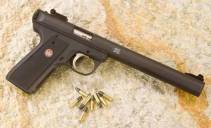












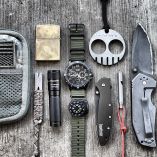














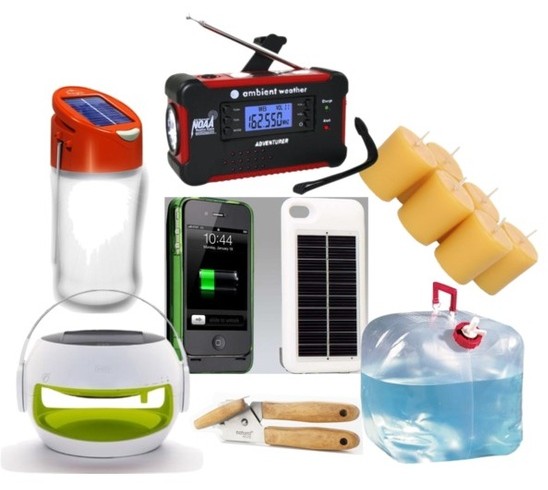

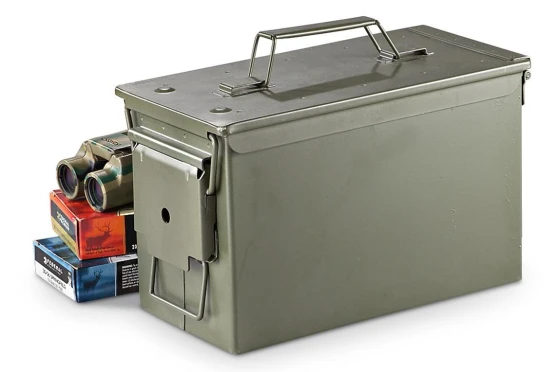

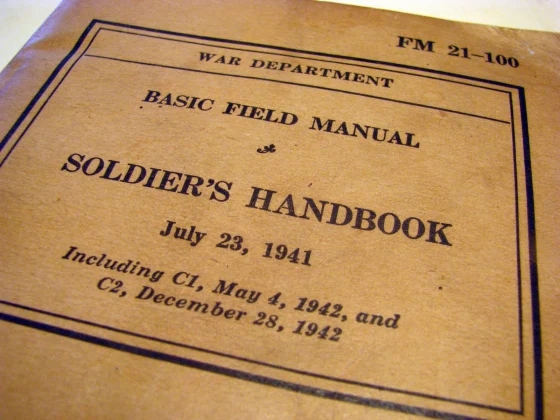
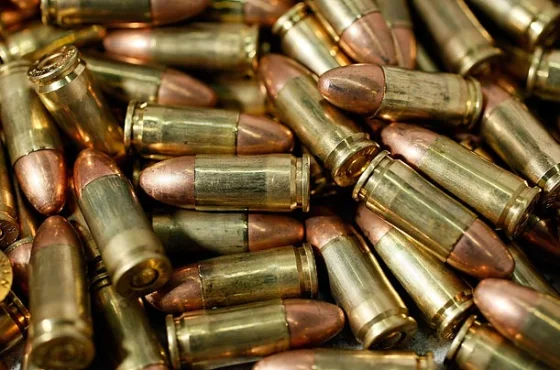

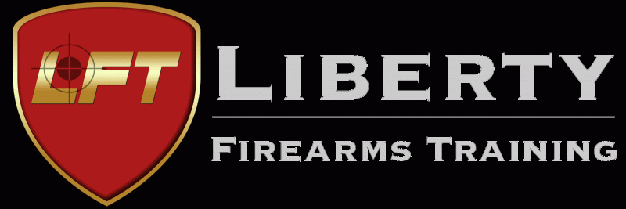
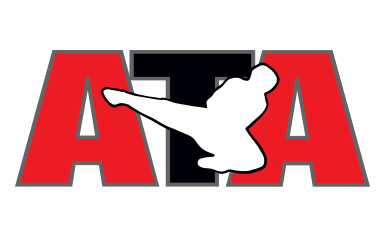
Noticed that you promote the Abraxas 1 silencer. I have been experimenting with my Abraxas 1 for over 2 years. I’ll include my link to silencertalk.com that is more comprehensive. My findings show the the 3.3 oz Abraxas at 5.6″ will only cycle ,when using factory recoil springs, on the longer slide Glock 34 and M&P pro long slide. Anything shorter and you have a jamming problem. Also, i have been running Underwood Ammo’s +P+ 9mm thru the Abraxas for self defense…while this is SUPERSONIC, its still MUCH quieter than a 22 rifle, and adds more reliability into the Abraxas mounted System. It is comfortable to shoot the +P+ indoors and in close proximity to others. I shoot the Abraxas more than all my other silencers combined. When target shooting, I load six, with slide locked back, and dip in a jar filled with water, let drain for 1 sec, drop slide shoot 6 to lock back, and repeat.
http://www.silencertalk.com/forum/viewtopic.php?f=2&t=123545&hilit=abraxas
LikeLike